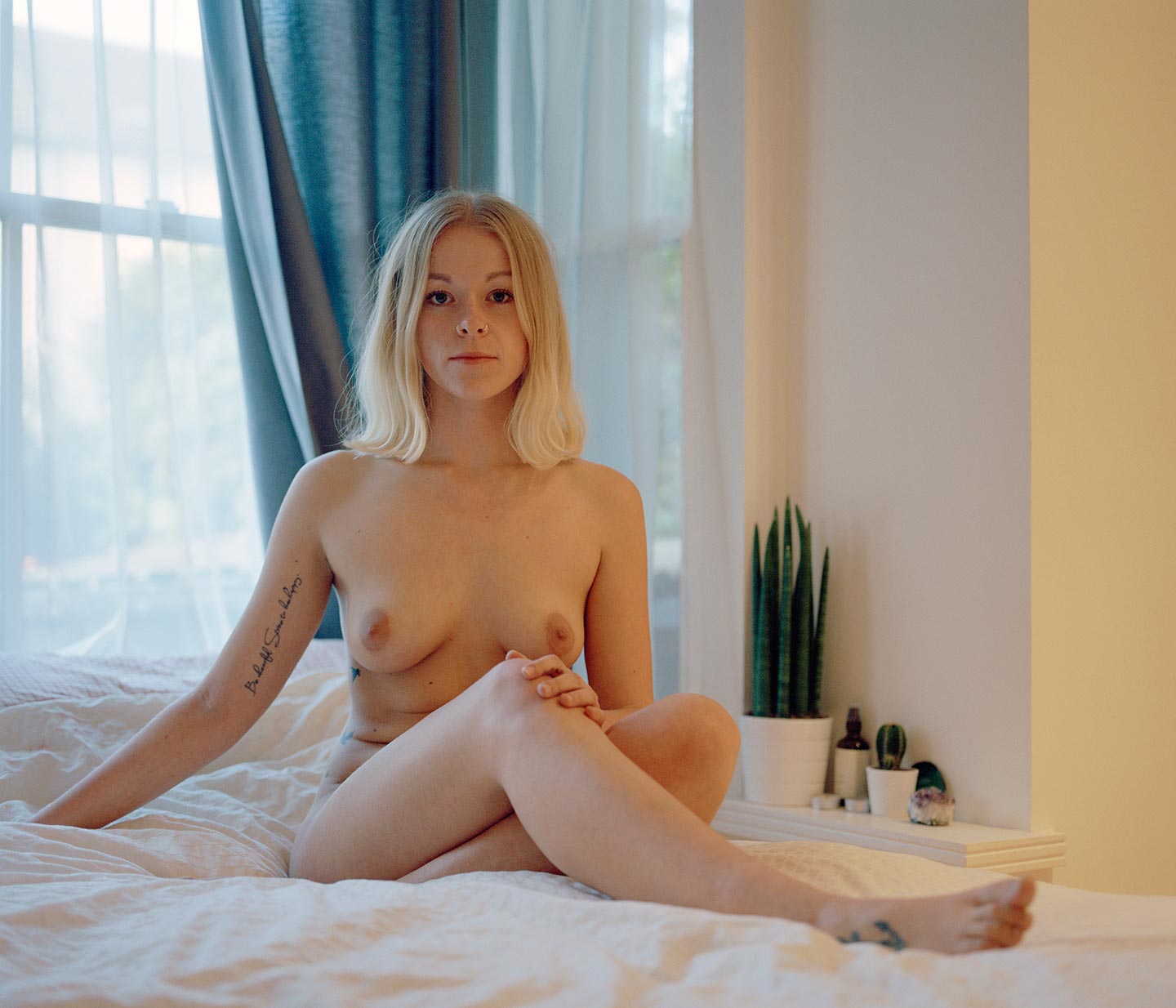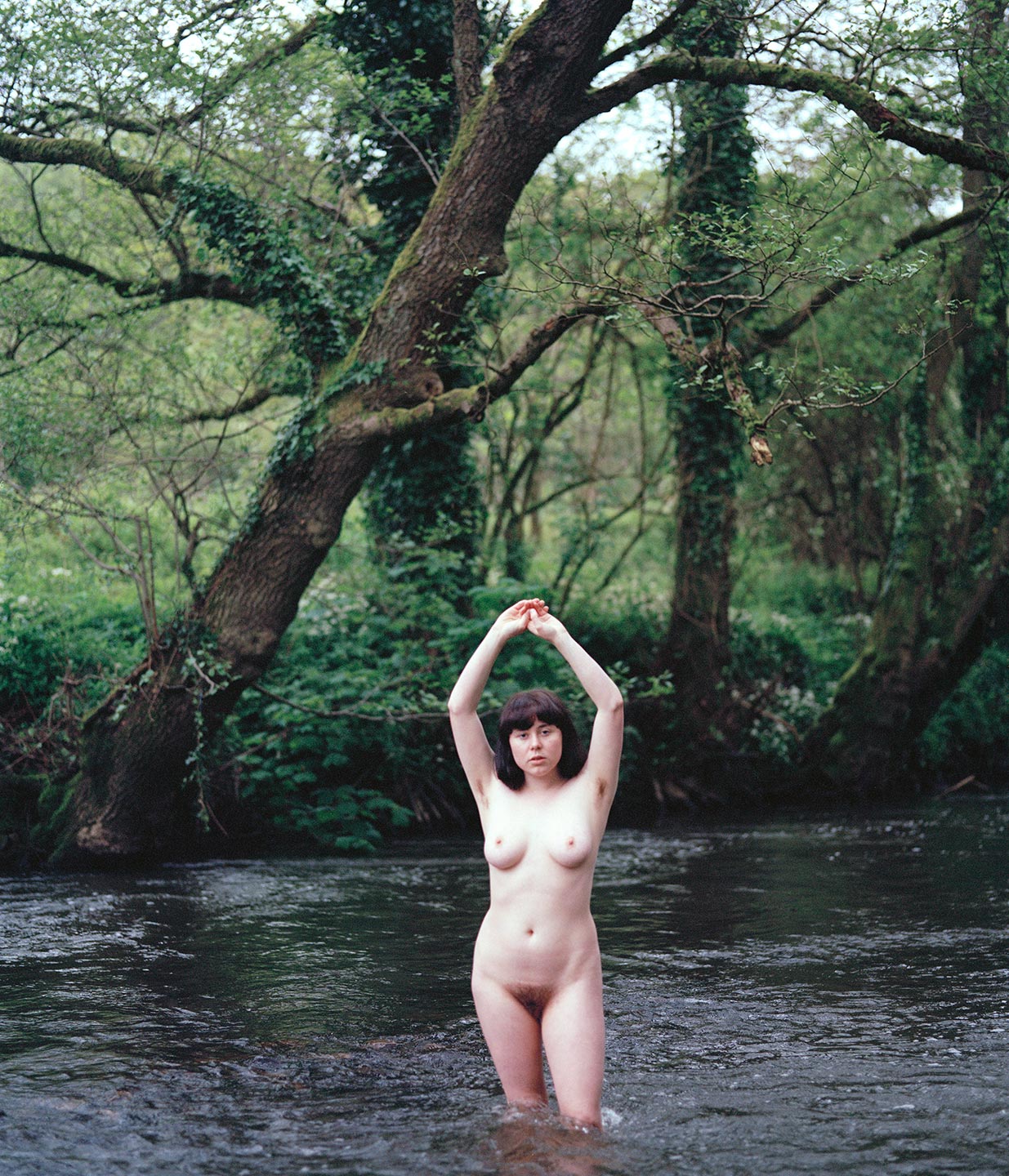Nudity and Taboos — Hannah Saunders and Her Friends Claim Authorship of Their Bodies











IN THIS INTERVIEW > 22 year-old British photographer Hannah Saunders discusses Karass, a series of intimate portraits of her friends aimed at questioning the overly sexualized representation of the naked body.
Hello Hannah, thank you for this quick Q&A. What are your main interests as a photographer?
Thank you for featuring the project. I’d say that my main interests where photography is concerned revolve around challenging taboos, exploring histories, seeking inspiration from literature and poetry. Photographing those close to me in my own life is very important: I think that relationships can be explored and cherished through photography.
Photography has the power of nostalgia and this is something I always consider when making my work; the passage of time is not something that should be overlooked. I like to think of how the sitter or the viewer will relate to the work upon its creation, but also many years later, and this impacts the way the image is taken.
Please introduce us to your series Karass: who are the people we see in the images, and why are they naked?
Karass is a series of portraits that question the way our society consumes naked imagery, reflecting on why we are so disconnected from our own forms. The people in my photographs are my friends, those that I feel a connection with, where I feel there is a strong element of trust and understanding. Some of them are naked because they felt it would be an empowering experience for them, whether it was to boost their confidence, because they identified with the project’s aspirations, because they wanted to get involved and join in, or because they were critical of the standards imposed on men and woman all over the globe; everyone had their reasons. Some of them were really body confident and just loved being naked. It was just normal for them.
How did you approach the work, photographically speaking? What guidelines did you follow while making the portraits, and how much did your subjects participate in the process?
I approached the work in a sensitive manner, along with being positively amazed and proud and empowered by my friends who were now my sitters. I had to be careful to portray everyone in the way that they were comfortable with -some portraits are not included in the work online: I make sure that I’m respecting peoples authorship of their own bodies, and if someone just wants to have their photograph taken but not necessarily have it public, that’s fine with me.
I see every single one of the photographs as a collaboration. I usually ask people where they would be comfortable being photographed – that could be at home in their bedroom, or in a river, or somewhere from the past where they have memories within the landscape. I also posed for the project as my friends were definitely not going to let me get away with having them bare all and me stay behind the camera. This was another layer of this idea of collaboration.
The photographs are all on a Mamiya RB67, so they’re all made fairly slow and are just a process of chatting and making sure everyone’s comfortable and happy with how the image is going to look.
Karass is a term introduced by American author Kurt Vonnegut. Can you explain what it means, and how it relates to your photographs?
The term Karass is taken from Vonnegut’s novel Cat’s Cradle. The novel’s plot revolves around a fictitious religion called Bokonism, a religion openly fake from the outset in, yet still commands a strong following. A Karass is a group of people bound together through some sort of cosmic overlap of fates. This is why I use the term Karass to refer to this project. It’s about these people being the personifications of this big web of life that we as humans are entangled within.
My subjects act as my own Karass and show that bodies are beautiful and that we can change our perceptions of the naked body if we change the implications and connotations they hold. We don’t need to think that the body is just a vehicle for sexual gratification within portraiture or our portrayals of ourselves. We can reclaim authorship of our own bodies and recognise ourselves as works of art, not in a narcissistic way, but in the most natural and wondrous light. It’s also not trying to make people feel uncomfortable or be in your face, I hope they’re quite subtle and sensitive from the perspective of a viewer.
Did you have any specific reference or source(s) of inspiration in mind while working on Karass?
I spent a lot of time at the start looking at photographs from Corinne Day’s Diary, Ed Templeton’s paintings from The cemetery of reason, some of Rip Hopkins portraits, etc. There was a lot of looking at portraiture, but in the end, every time I made a portrait it was more about reacting to the scenery that my sitter was comfortable within.
What have been the main influences on your photography?
At first Elliott Erwitt’s photos of dogs and August Sanders’ typographical approach to photography; then literature and poetry; then experiences and opinions from within my own life. Judy Chicago’s The Dinner Party and the way it tried to redefine the way we relate to imagery of the female form was also a big influence for me.
Who are some of your favorite contemporary photographers.
Roger Ballen, Petra Collins, Clive Landen, Zofia Kulik, Abbie Trayler-Smith, Dragana Jurisic, Lisa Barnard, Clémentine Schneidermann, Jack Latham, Molly Matalon, Anastasia Taylor-Lind, Mishka Henner.
Choose your #threewordsforphotography.
Memories. Histories. Perspectives.
Keep looking...

FotoCal — Photography Awards, Grants and Open Calls Closing in July 2025

FotoCal — Photography Awards, Grants and Open Calls Closing in June 2025

FotoCal — Photography Awards, Grants and Open Calls Closing in May 2025

FotoCal — Photography Awards, Grants and Open Calls Closing in April 2025

FotoCal — Photography Awards, Grants and Open Calls Closing in March 2025

FotoCal — Photography Awards, Grants and Open Calls Closing in February 2025

FotoCal — Photography Awards, Grants and Open Calls Closing in January 2025




